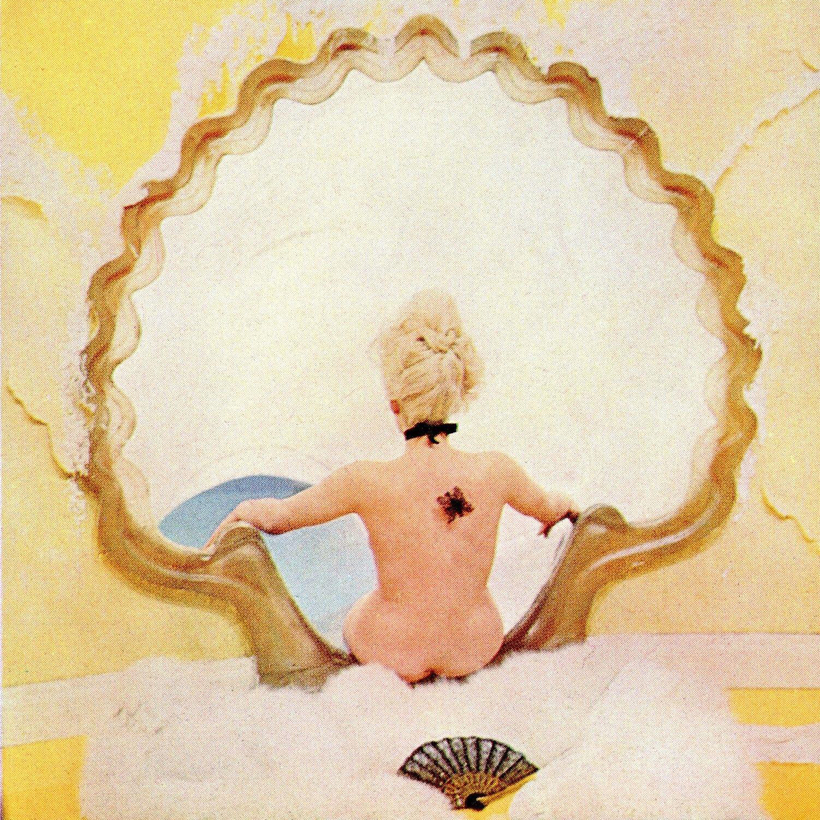There are many stories we tell ourselves about our bodies. These stories are often based in a sort of instinctual logic that only renders them true some of the time. For example, women with wider hips and higher quantities of glute and thigh fat do have an easier time producing healthy, smart babies. Yet breast size, which we may imagine as correlating with milk production to explain our culture’s general affinity for bigger cups, plays little role in infant development at all.
Stories like these, as contemporary as they may be, are thousands—millions!—of years in the making. They pre-date medicine and the categorization of bodies according to scientific labels. They pre-date language. They even pre-date humans.
But they don’t, in fact, pre-date femaleness. All the bits and quirks and strengths that make up the female body, be it mammary glands or wombs or even the shape of our knee joints, have developed over an evolutionary process stretching from 205 million years ago to today.
Women with wider hips have an easier time producing healthy, smart babies. Yet breast size, which we may imagine as correlating with milk production to explain our culture’s general affinity for bigger cups, plays little role in infant development.
Not all of the first progenitors of these traits were human: many were akin to a weasel, squirrel, or mouse. Others were closer to primates or monkeys, before later taking on a bipedal form and eventually developing into something resembling our current Homo sapiens selves.
These creatures are what researcher and writer Cat Bohannon has dubbed our “Eves.” In Eve: How the Female Body Drove 200 Million Years of Human Evolution, Bohannon traces the origin of these features, which have come to define what it means to biologically be a woman.
In 2023, this is not the most straightforward task. The concept of the “biological woman” is far newer than any of these traits, and the idea that such a concept might be contested is even newer. Bohannon manages to navigate this well, weaving millions of years of evolutionary science with ultra-contemporary language and politics. Yet still this raises new questions: Is our current conception of sex and gender a blip on the time line, or will it come to shape the adaptations we may form some thousands of years in the future?
In each chapter of her book, Bohannon introduces a potential “Eve” of various aspects of femaleness. She gives them cute names, such as “Morgie,” short for Morganucodon, an example of one of the first lactating mammals in evolution. Naturally, we are not related to Morgie directly, but she represents a possibility of how we, too, adopted the ability to breastfeed. The remaining Eves of the book are potentially responsible for language, tool usage, menopause, and even our sense of perception.
There is no mistaking the fact that across species, male and female are different in far more than just their genitals. These differences and adaptations have almost always been a matter of survival—for example, females may have a more heightened sense of smell than males in order to better protect us against poisons and render us more likely to pass on our species. “Because their bodies do so much of the heavy lifting when it comes to reproduction, the death of a female is always going to be far costlier for the species’ local fitness than the death of a male,” writes Bohannon. But she is quick to address how alike the sexes may be, too, and how often the differences between them are mutated or disappear entirely.
Traits and human characteristics that have developed more recently, in the last several hundred thousand years, such as menopause, sexism, and even early forms of what we might call gynecology, have similarly evolved out of a need for safety and survival. That humans practice monogamy and not polygamy, be it through universal promiscuity or harem-style setups like most other primates, could potentially have been a bargain hominid females made with males some time ago, trading the certainty of parentage for security and protection.
Cat Bohannon traces the origin of these features, which have come to define what it means to biologically be a woman. In 2023, this is not the most straightforward task.
“I’m not convinced the story is as simple as it sounds: females falling victim to male power in ancient human history. Instead, I think females were probably instrumental in the shift to patriarchies,” says Bohannon in her final chapter, on love. Yes, it’s possible that even the patriarchy was a strategic evolutionary development to ensure the continuity of the human race.
As Bohannon explains, however, contemporary sexism and misogyny—be it prohibiting young women from accessing sexual-health information and care due to notions of chastity, or child marriages in countries like Niger, or the disproportionate rates of female illiteracy globally—are having the opposite effects. Even if the oppression of women emerged out of some sort of scenario to ensure fewer of our children died from violence among other males and females in our species, as is the case with many primates today, it has since contributed to a reduction in our health and well-being.
Someday, though, our bodies may adapt once again. Our culture can change quickly, Bohannon says, but physiology does not. There is much today in our culture that has indeed changed fast. That many women globally do enjoy some autonomy, education, and equal rights is one such cultural change that barely represents a second on the evolutionary time line. That gender is now even seen among many as something cultural, a social development, represents even less time. Perhaps in another few hundred thousand years, the female body could have some new trait to explain this. Maybe the women of today are Eves of their own.

Magdalene Taylor is a Brooklyn-based writer

